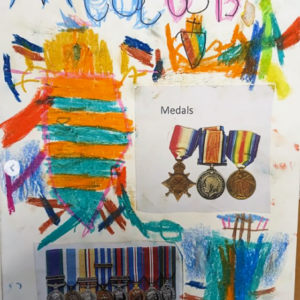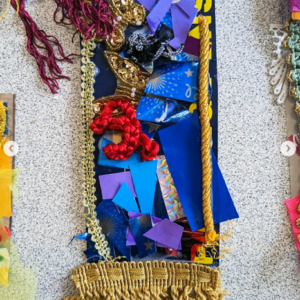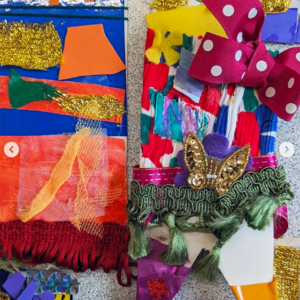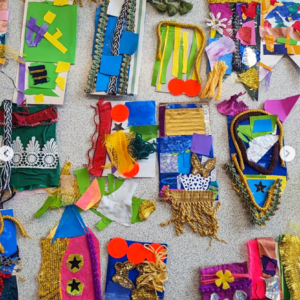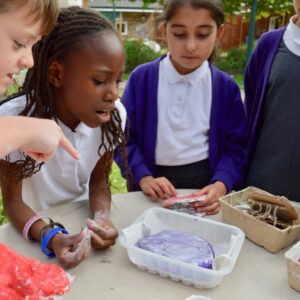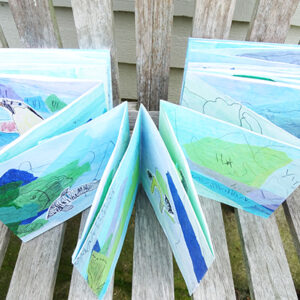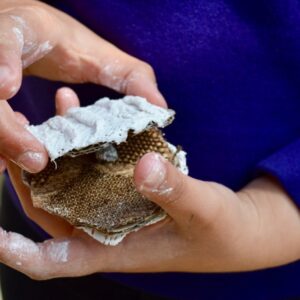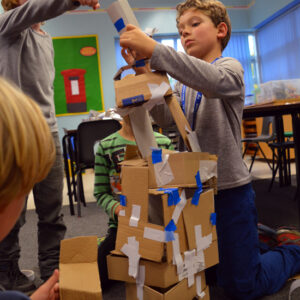Pathway for Years 1 & 2
Disciplines:
Sculpture, Drawing
Key Concepts:
-
That when we make art in 3 dimensions it is often called Sculpture.
-
That we can generate ideas through playful exploration.
-
That we can build understanding of the properties of materials through manipulation.
-
That making sculpture is a partnership between materials, ideas, hands and tools.
-
That we can reflect upon our intention when we see our ideas made physical.
In this pathway children are introduced to what sculpture can be, and invited to explore the work of other sculptors whilst taking a playful and inventive approach to making their own sculptures.
The pathway encourages children to start voicing their response to sculptural artworks, including their own, and to give them time and space to explore properties of materials, and what happens when you join one or more materials together to construct new forms.
Theme:
Transformation & Invention
Medium:
Construction Materials (card, paper, wood, wire, string, fabric including recycled and found objects)
Artists:
Christo & Jeanne-Claude, Faith Bebbington, Caitlind r.c. Brown & Wayne Garrett
This pathway will take approximately half a term, based upon a weekly art lesson.
If you use this resource in your setting, please tag us on social media: #InspiredBy @accessart (facebook, twitter) @accessart.org.uk (instagram) and share the url. Thank you!
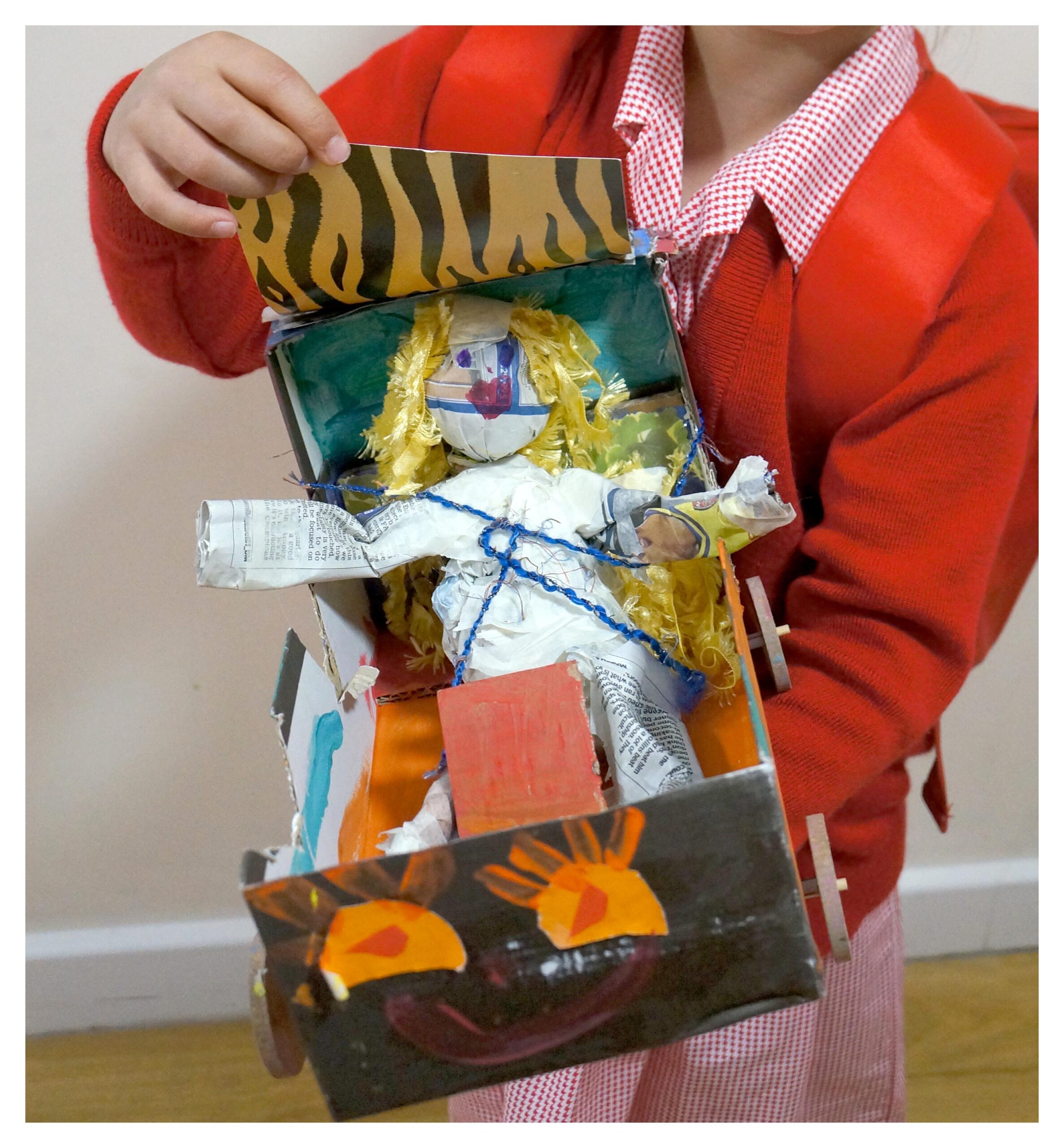
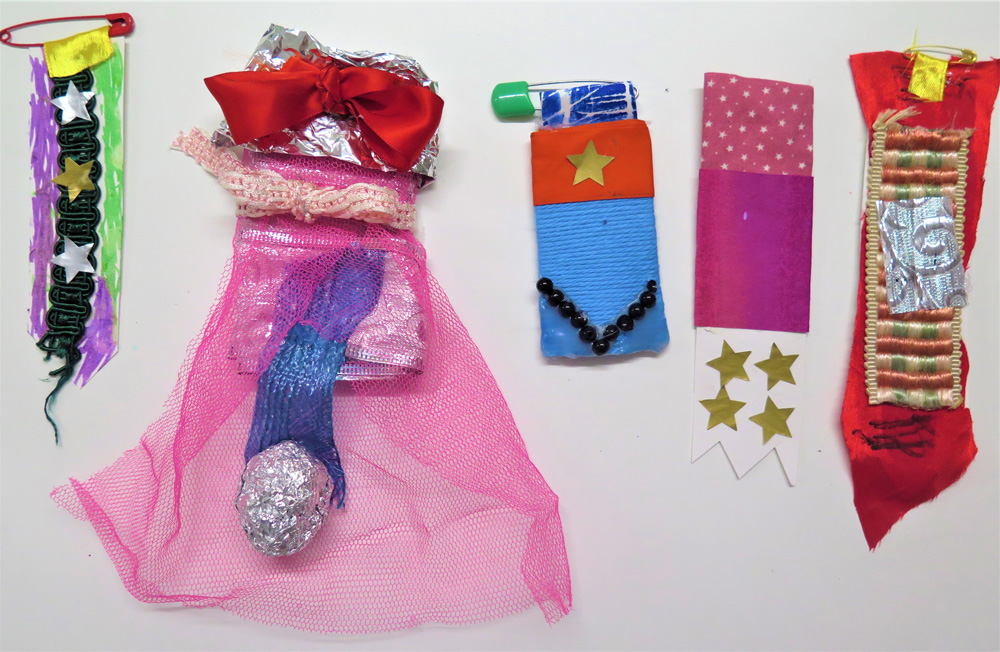

Teaching Notes
Find the MTP for this pathway here.
Curriculum Links
Geography: Adapt the playful making approach to make sculptures of ports and harbours, towns, cities, villages, The Great Wall of China etc.
Maths: Uses language to support understanding of 2D/3D shapes, sequence, measuring, position & direction.
Science: Uses language to support understanding of properties and manipulation of materials.
PSHE: Collaboration, responsibility to the planet.
I Can…
-
I have explored what we mean by “sculpture” and I thought about what I like about different pieces of sculpture.
-
I can use my sketchbook to make drawings inspired by sculptures I have seen, to help me think about what I like, and to remember what I have seen.
-
I can use my hands to make small sculptures out of lots of different materials. I can bend, twist, fold, cut and fasten.
-
I can use my hands to make sculptures without designing first. I can just see what happens if…
-
I can discover that sometimes working with materials is hard work – things break or my fingers hurt – but that is all ok!
-
I can share my work and listen to what other people like about it.
-
I can look at other people’s work and sometimes share what I like about it with them.
Time
This pathway takes 6 weeks, with an hour per week. Shorten or lengthen the suggested pathway according to time and experience. Follow the stages in green for a shorter pathway or less complex journey.
Materials
A3 Sugar paper, handwriting pens.
Construction Materials (see list here )
Pathway: Playful Making
A PDF of this pathway can be found here.
-
Aims of the Pathway
This pathway aims to introduce children to the idea of Design through Making: a playful approach to exploring materials and constructing sculpture.
- Week 1. Introduce the idea of “Sculpture”
What Is Sculpture?
Use the “What Is Sculpture?” resource to introduce children to the idea that when we make art in 3 dimensions it is often called Sculpture.
- Talk
Enable Children to Be Curious & Articulate
Use the animation above as a starting point to talk about Sculpture made by Sculptors.
Use the artworks and questions on the free to access “Talking Points: Introduction to Sculpture” to help children explore sculpture made by other artists.
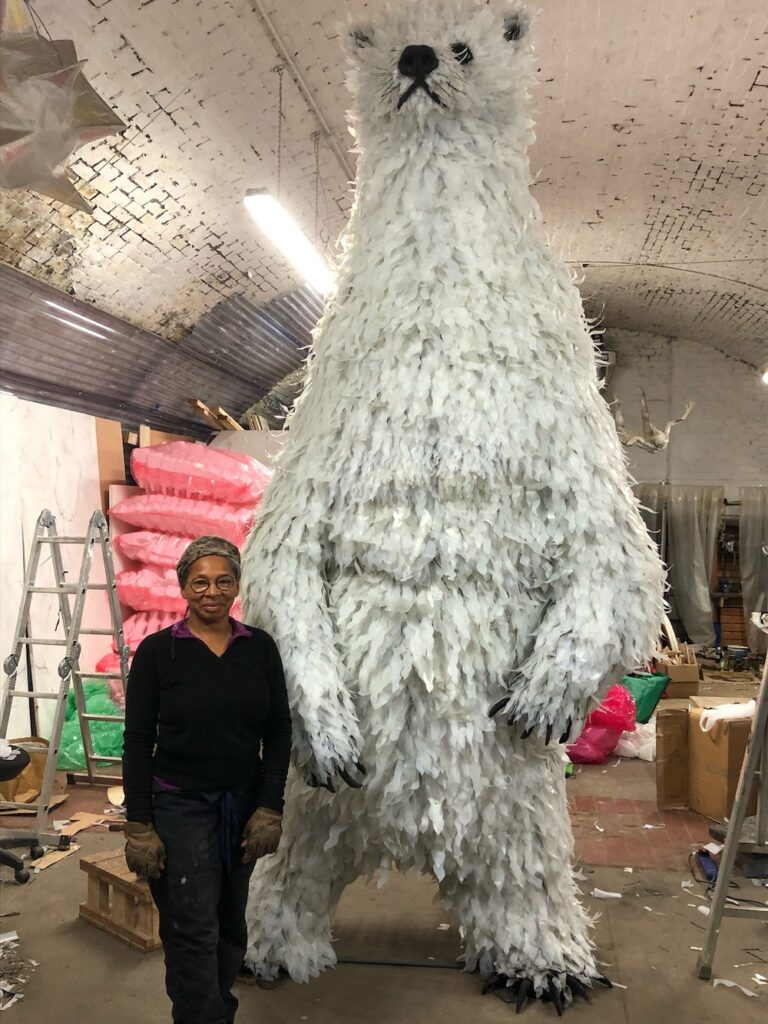
Explore the work of artists Linda Bell and Nnena Kalu through free to access “Talking Points: Linda Bell” and “Talking Points: Nnena Kalu“.
- Work in Sketchbooks
Show Me What You See
Invite pupils to make drawings of the sculptures using the free to access “Talking Points: Introduction to Sculpture” resource above. Create drawings in sketchbooks inspired by the videos and images using “Show Me What You See“.
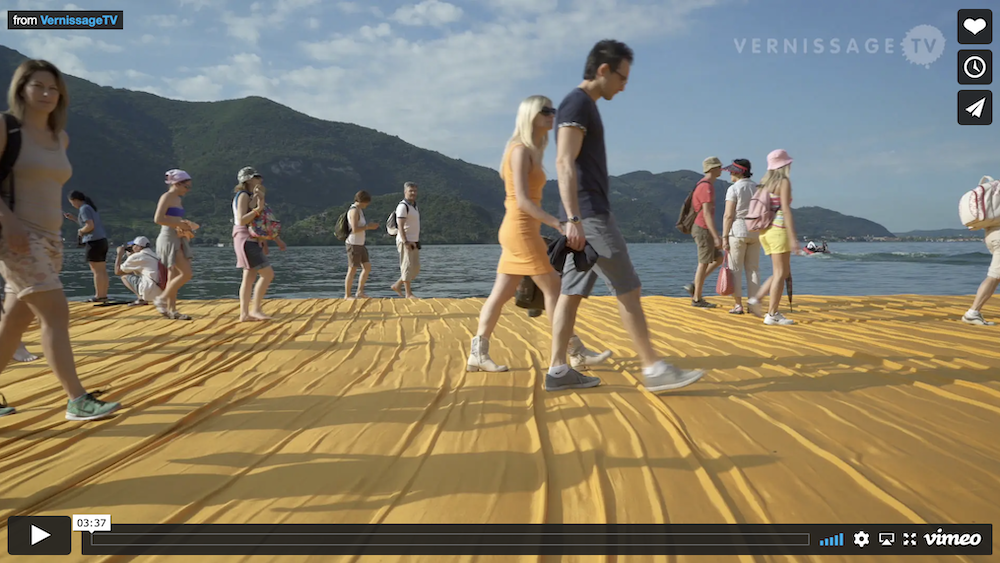
Remember that children are using drawing as a way of collecting information and adding their own thoughts. They can also add words etc (no need for sentences).
Remember there is no need/requirement to add learning objectives to sketchbooks or to mark the pages in any way.
- Week 2. Start Making
The AccessArt Making Prompt Cards
Time to let the children explore materials and tools and connect hand, heart and head. Before you introduce children to this activity, watch “Design through Making“.
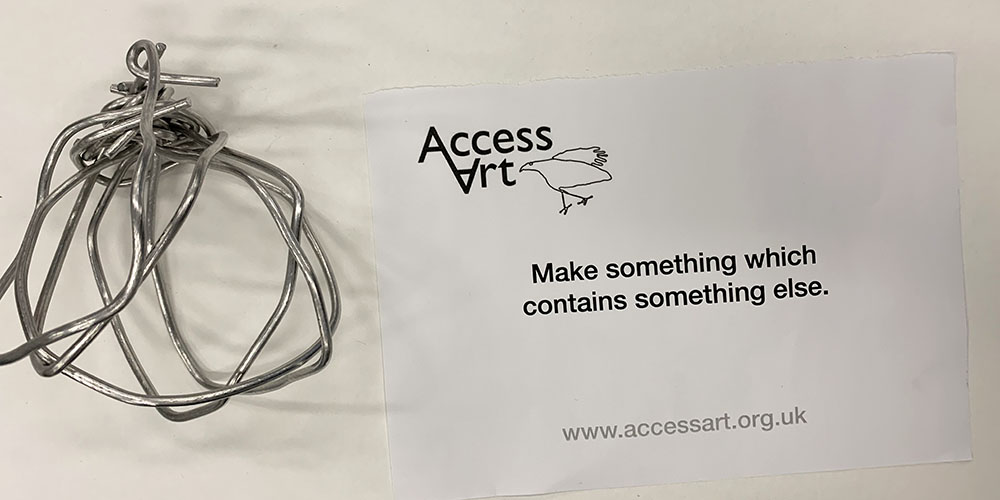
In this warm up session, introduce children to “The AccessArt Making Prompt Cards” a wide range of materials and invite them to make in a playful way without a predefined outcome in mind.
Openly invite the children to explore the materials without “knowing” what they will make (“We are going to be explorers and inventors…”). This comes easy to young children and we tend to grow out of it as we get older – but it’s an important skill to acknowledge and retain.
Collect together materials on the materials list in the Teacher notes column, and choose one or more of the prompts.
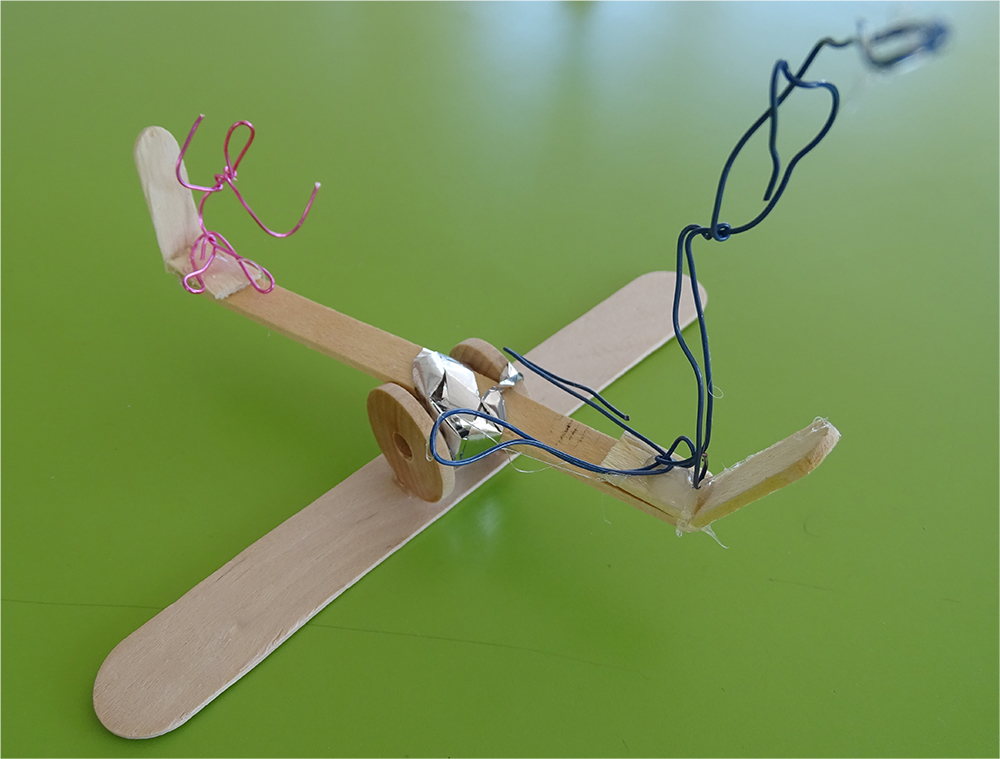
At the end of the session, tidy the room and clear a space to show the “sculptures” made. Remember these are just “doodles” of materials – and are the first stage in exploring the properties of materials, and how we can connect and combine to make new objects.
Ask the children to try to guess the prompt card used, and to talk about the sculptures as a class.
- Week 3 & 4. Find Your Focus
Make Your Sculpture
Choose from one of the projects below, or adapt a similar approach to your own area of focus/curriculum theme.
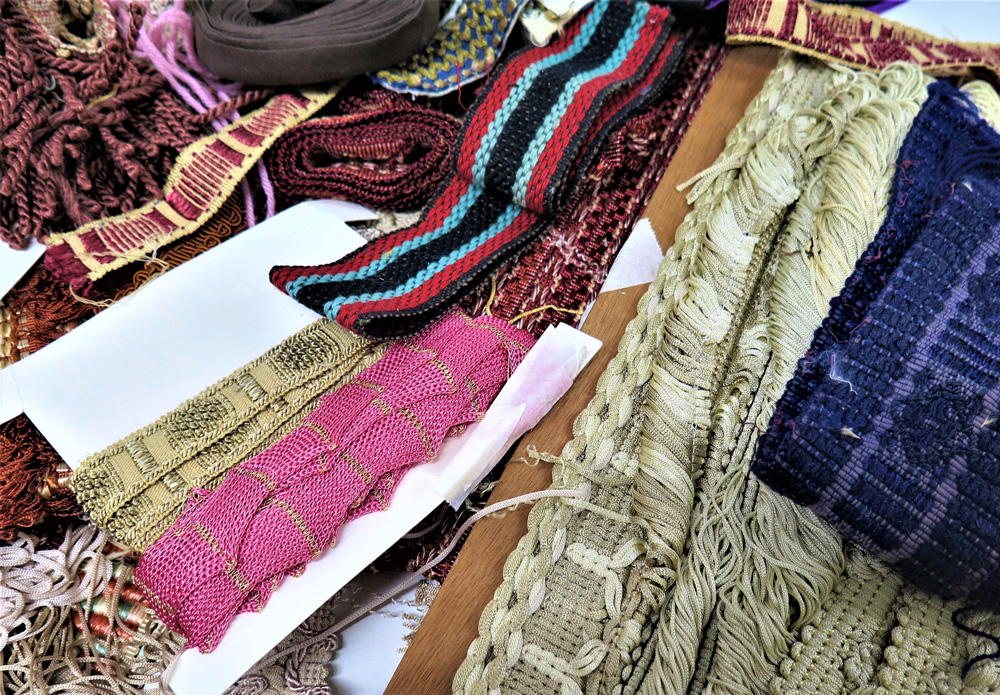
All the resources below share the common aim of enabling children to explore materials, simple tools and their ideas, with plenty of freedom to play and invent.
Give children plenty of time and space to explore, take creative risks, discover and share, without working towards a predefined outcome. Encourage and celebrate individuality.
Have sketchbooks open on tables and encourage children to make notes (whatever form they take), and record and reflect.
- Project 1
Creativity Medals

Jan Miller is an Art and Design Technology teacher and magazine editor with 25 years’ experience. Invite children to create imaginative and unique “Creativity Medals” using recycled materials.
-
Or…
- Project 2
Making a Roller Coaster
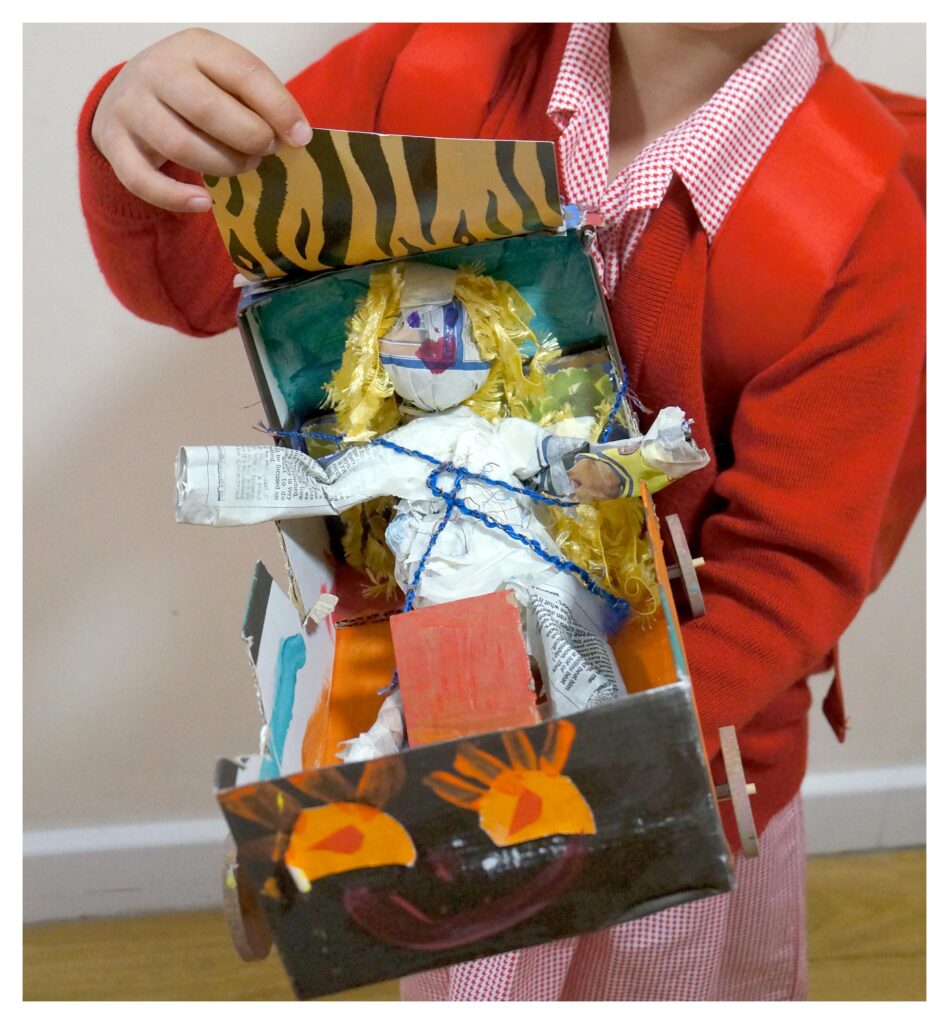
KS1 children use their imaginations and sense of fun to collaborate to create a “Model Roller Coaster” with moving parts.
-
Or…
- Projects 3 & 4
Boats That Float & Sea Creatures
Both these projects were illustrated with older children, but they follow the same playful making approach. Adapt by keeping tools simpler (ie scissors, but no pliers or glue guns).
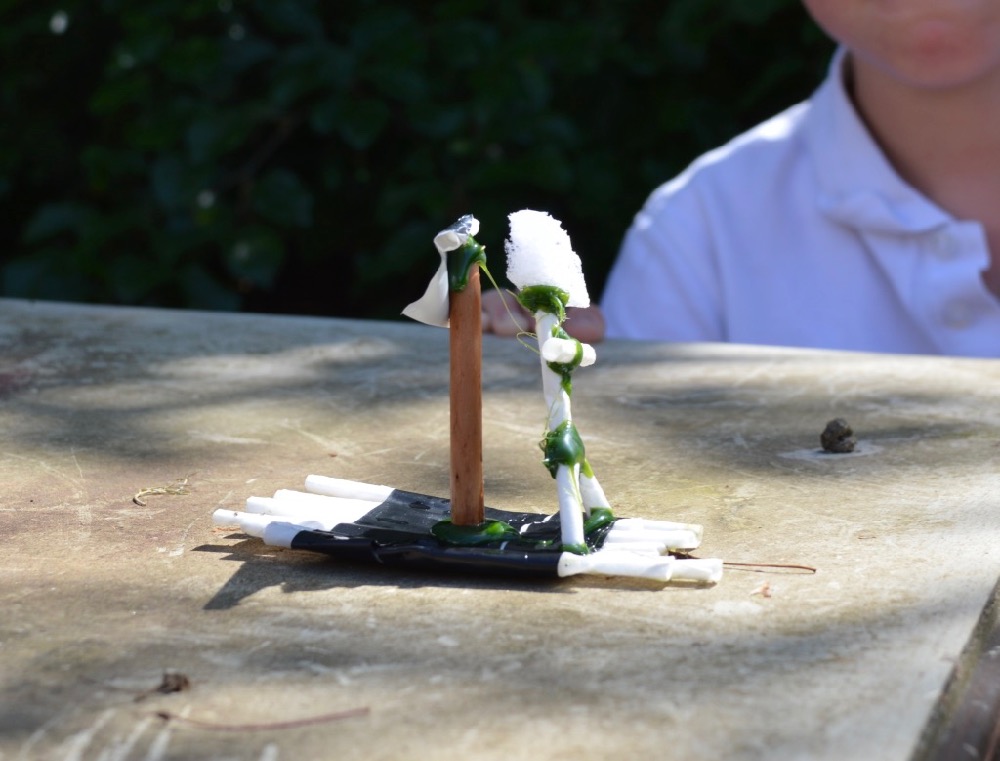 Boats That Float
Boats That Float 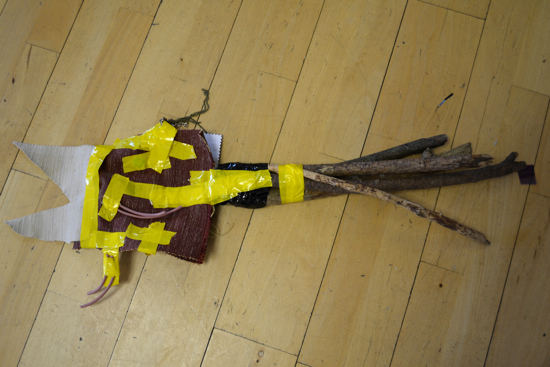 Sea Creatures
Sea Creatures - Week 5/6
Presenting, Talking, Sharing, Documenting & Celebrating
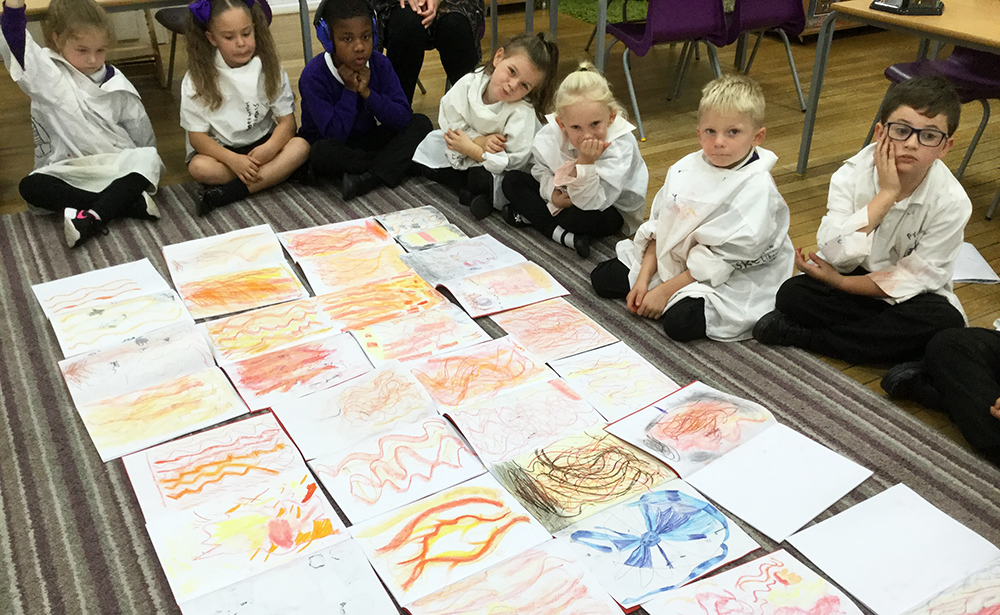
Time to see the work which has been made, talk about intention and outcome.
Invite children to display the work in a clear space, and walk around the work as if they are in a gallery. Give the work the respect it deserves. Remind the children of their hardwork.
If you have class cameras or tablets, invite the children to document their work, working in pairs or teams. Think about how the work is lit and what it is displayed on. Encourage them to feel able to change the background, turn the sculpture around etc. Explore how children can take high quality photographs of 3d artwork with this resource.
Use the resource here to help you run a class “crit” to finish the project.
See the Pathway Used in Schools…
